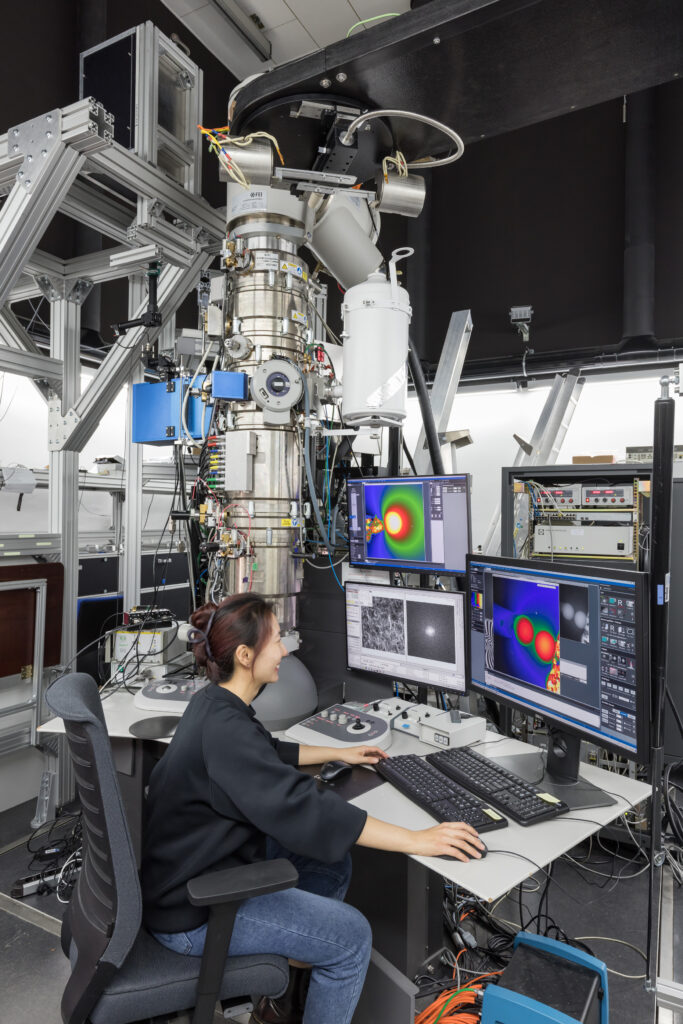FEI Titan G2 60-300 HOLO

The FEI Titan G2 60-300 HOLO is a unique fourth generation transmission electron microscope, which has been specifically designed for the investigation of electromagnetic fields of materials using off-axis electron holography. It has a Lorentz lens to allow magnetic field free imaging plus two electron biprisms, which in combination enable more uniform holographic fringes to be used. The instrument also has an ultra-wide objective lens pole piece gap which is ideal for in situ experiments. For these purposes, the FEI Titan G2 60-300 HOLO is equipped with a Schottky type high-brightness electron gun (FEI X-FEG), an image Cs corrector (CEOS), a post-column energy filter system (Gatan Tridiem 865 ER) as well as a 4 megapixel CCD system (Gatan UltraScan 1000 XP). Typical examples of use and technical specifications for the instrument are given below.
Typical Applications and Limitations of Use
The configuration of the FEI Titan G2 60-300 HOLO allows a variety of advanced transmission electron microscopy techniques to be applied to a wide variety of solid-state materials. These techniques include high-resolution transmission electron microscopy (HRTEM), electron energy-loss spectroscopy (EELS), energy filtered transmission electron microscopy (EFTEM), scanning transmission electron microscopy (HRSTEM) with high-angle annular dark field (HAADF) STEM imaging, off-axis electron holography (EH), Lorentz microscopy, electron tomography (ET) and combinations of these techniques.
Investigation of aqueous, contaminated, ferromagnetic or organic samples with the FEI Titan G2 60-300 HOLO is possible after discussion with both of the instruments officers.
Sample Environment
Using dedicated cooling or heating stages, the FEI Titan G2 60-300 HOLO will allow samples to be investigated either at room temperature or under liquid nitrogen cooling conditions at a vacuum level of about 10–8 mbar. Besides this standard setup, the sample environment can be adapted to various conditions, e.g. the thermal treatment or the application of external electric or magnetic fields to samples, making use of a wide portfolio of in situ TEM holders available through the ER-C user services.
Technical Specifications
| Electron acceleration voltage | 60 kV … 300 kV |
| Electron source | Schottky X-FEG |
| Information limit (TEM) @ 300 kV | < 120 pm |
| Resolution (STEM) @ 300 kV | < 180 pm |
| C-TWIN objective lens | 11 mm |
| Objective lens Cs (Lorentz mode) | < 100 mm |
Specimen Stages
| Double tilt low background holder | ± 70° |
| Single tilt holder | ± 70° |
| Dual-axis tomography holder | ± 70°, 360º |
| On axis rotation tomography holder | 360° |
| Liquid He holder | 10 – 60 K |
| Further in situ specimen stages available |
